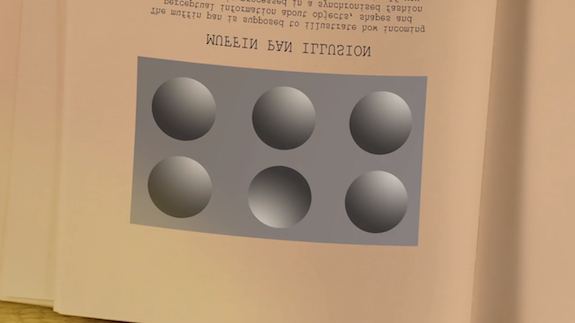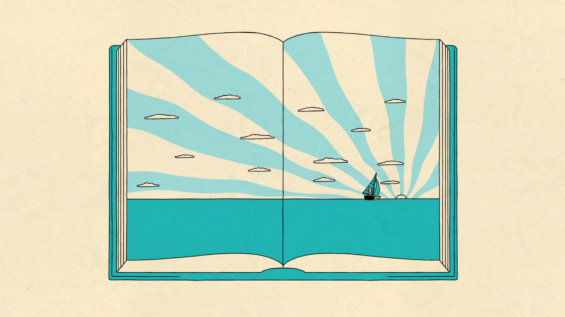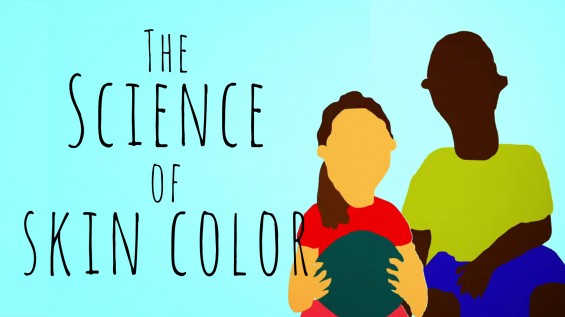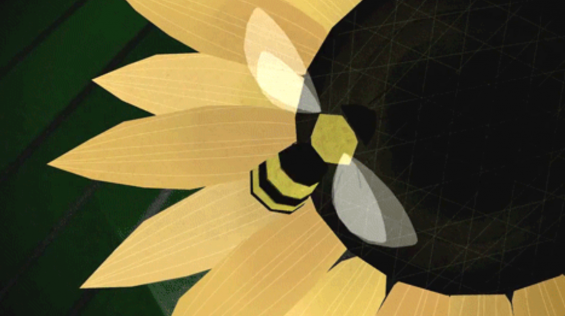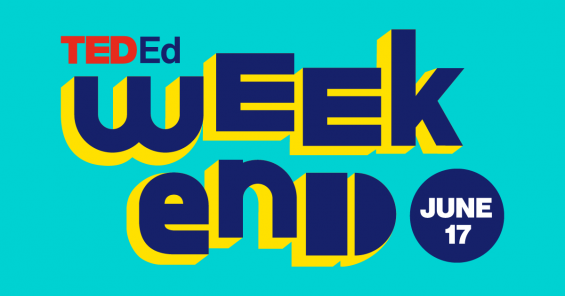
Will these 6 illusions trick you?
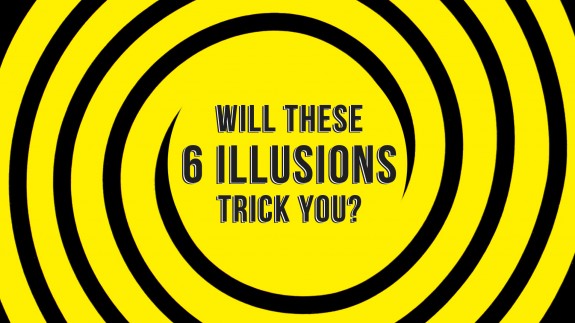
How much do you trust your eyes? Put them to the test, and see if you’ll get tricked by these 6 illusions.
1. Which of the two center circles is bigger?
Do you think the right is bigger? They’re actually both the same size.
What’s happening? It’s called the Ebbinghaus Illusion, where two identical objects look different because of the relative size of the objects they’re surrounded by. [Source: The moon illusion]
2. Look at the cup that is inverted.
Now, let’s spin the pan.
Is the cup popped up or dipping down? Both.
What’s happening? Your brain’s visual cortex operates on assumptions about the lighting of this image. It expects light to come from a single source, shining down from above. And so these shading patterns could only have been caused by light shining down on the sloping sides of a dome, or the bottom of a hole.
If we carefully recreate these clues by drawing shading patterns, even on a flat piece of paper, our brain reflexively creates the 3D concave or convex shape. [Source: How optical illusions trick your brain]
3. Focus your attention to a white spot at the center.
Now, keeping your gaze fixed on this white spot, check what’s happening in your peripheral vision.
The other spots, are they still white? Or do they show weird flashes of grey?
What’s happening? In reality, this grid really is just a grid. But not to your brain’s visual system. In your eyes, your retinal ganglion cells notice that there is more white around the intersections because they are organized to increase contrast with lateral inhibition.
Better contrast means it’s easier to see the edge of something. [Source: How optical illusions trick your brain]
4. Would you dare to walk this levitating crosswalk?
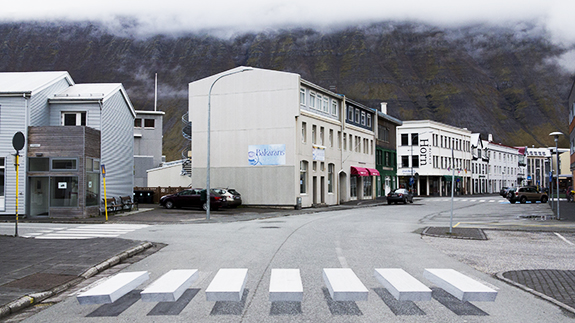 Source: Thorir Ingvarsson / Shutterstock.com
Source: Thorir Ingvarsson / Shutterstock.com
Wait, what happened to the crosswalk below?
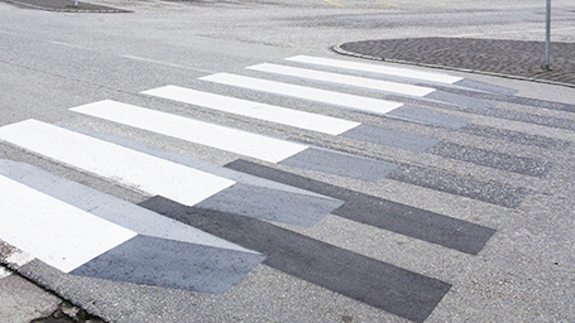 Source: Thorir Ingvarsson / Shutterstock.com
Source: Thorir Ingvarsson / Shutterstock.com
It’s actually a sidewalk illustration.
What’s happening? Sidewalk illustrations can trick your brain because they employ a technique called anamorphosis. Anamorphosis is a special case of perspective art, where artists represent realistic three-dimensional views on two-dimensional surfaces. [Source: The mathematics of sidewalk illusions]
5. Take a look at these 2 photos of Abraham Lincoln.
Nothing weird going on here.
Wait, turn that upside down one right side up. What have they done to Abe?
What’s happening? When we see faces, we have to recognize they are faces and figure out what they’re expressing very quickly. And what we focus on most are the eyes and mouth.
In the second photo, you realized your brain had taken a short cut and missed something. But your brain wasn’t really being lazy, it’s just very busy. [Source: How optical illusions trick your brain]
6. Take a look at the 2 yellow lines.
Which line is bigger?
Again, they’re actually the same length.
What’s happening? The two yellow lines in this drawing are the same size, but the upper one seems bigger because we interpret it as receding farther into the horizon. [Source: The moon illusion]
Want to learn more? Check out our TED-Ed Lessons on mathematics.


